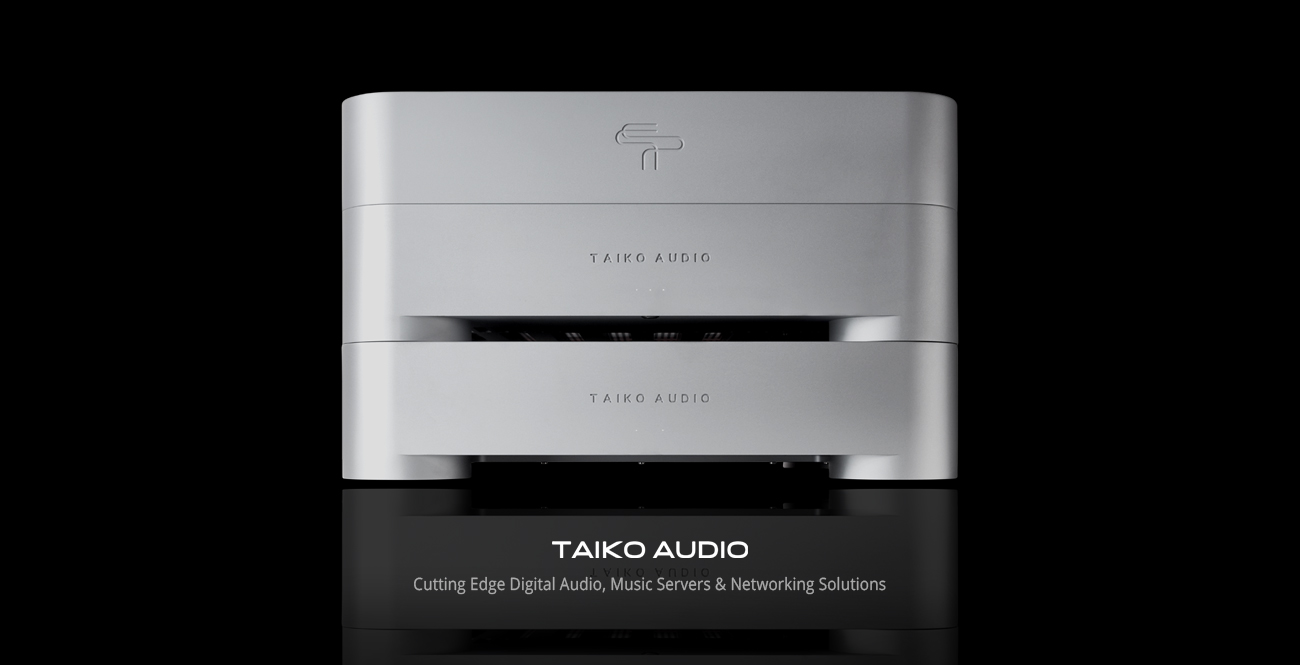Introducing Olympus & Olympus I/O - A new perspective on modern music playback
- Thread starter Taiko Audio
- Start date
You are using an out of date browser. It may not display this or other websites correctly.
You should upgrade or use an alternative browser.
You should upgrade or use an alternative browser.
Does the Aries Cerat have an XDMI interface?
Not ready yet, so they are using XDMI AES/EBU output:
F111 - A4.1
Aries Cerat, Contendo II loudspeakers and more
XDMI AES/EBU to the Homerus DAC
XDMI AES/EBU output:
Ahh. So the input being used is the legacy USB.
Ahh. So the input being used is the legacy USB.
No, no... To avoid confusion - they were playing their turntable at the time Jason recorded the Aries Cerat video (which is where I took that screenshot from).
It looked like the Olympus was turned off as I did not see the LED lights on the front. But because of the angle and lighting that could have been misleading. Maybe that was early in the morning when they were starting... I have no idea.
But if/when they play the Olympus I would expect to see the DAC on AES/EBU and the lights on the Olympus ON.
Perhaps people in Munich will report soon. We are eagerly awaiting more feedback...
No, no... To avoid confusion - they were playing their turntable at the time Jason recorded the Aries Cerat video (which is where I took that screenshot from).
It looked like the Olympus was turned off as I did not see the LED lights on the front. But because of the angle and lighting that could have been misleading. Maybe that was early in the morning when they were starting... I have no idea.
But if/when they play the Olympus I would expect to see the DAC on AES/EBU and the lights on the Olympus ON.
Perhaps people in Munich will report soon. We are eagerly awaiting more feedback...
They actually prefer to use USB over AES/EBU, I guess implementation plays a role too.. All good, sounds great in that room aswell, like a supercharged Extreme I guess, nothing wrong with that!
So going to the show is not really about the audio after all, is it?Biergarten time!
View attachment 130470
From left to right:
Ton, Eelco, Christoph, Johannes, Jeroen, Me, Masha, Ed, Ted, Jordy, Dani
Steve Z
Steve Williams
Site Founder, Site Co-Owner, Administrator
Strange. I remember the claim that AES XDMI was far superior to USB.They actually prefer to use USB over AES/EBU, I guess implementation plays a role too.. All good, sounds great in that room aswell, like a supercharged Extreme I guess, nothing wrong with that!
Surprising.Strange. I remember the claim that AES XDMI was far superior to USB.
What if?
AC heard xdmi and thought that's as good or better than our new 286k tt?
Ummmm, let's go with usb...
AC heard xdmi and thought that's as good or better than our new 286k tt?
Ummmm, let's go with usb...
Is it 286k? Is that USD or Euro. A bit miffed it isn't 300k if that close.What if?
AC heard xdmi and thought that's as good or better than our new 286k tt?
Ummmm, let's go with usb...
Emile, now with the Olympus running 100% of battery, has the power cord still an audible influence when not recharging?
Emile, now with the Olympus running 100% of battery, has the power cord still an audible influence when not recharging?
Here is Emile's answer to that specific question :
More usefull info here :
Hope this helps,
Cheers,
Thomas
Strange. I remember the claim that AES XDMI was far superior to USB.
It is on the Lampizator Horizon and Totaldac
The thing to remember is how these interfaces are implemented in the DAC.
I wrote about this earlier in the thread, there are some very distinct differences between these interfaces beside practical things like sample rate support.
With AES/EBU and SPDIF the clock is at the source and embedded into the datastream send over the cable. This is then extracted at the receiver, in short, clock jitter will be relatively high.
To address this problem DAC manufacturers can incorporate reclockers on their inputs. Some DACs accept an external clock source, allowing you to use an external masterclock.
A very obvious example is Totaldac, their larger model DACs come with a reclocker by default, you can buy the reclocker seperately to add it to lower priced DACs, some of our customers even use 2 or 3 of these reclockers in series.
With USB I2S is generated inside the DAC, including clock, it’s up to the manufacturer how to further implement this, for which there are multiple options, but obviously jitter can be low to start out with. BUT USB receivers are electrically noisy.
Stavros tells me he optimised his DACs for USB, and yes to my ears it does sound better then AES/EBU, although AES/EBU is smoother, it doesn’t really capture things right in the time domain, as in sounds a bit slow / unexciting. So next up a native implementation for AC dacs!
Emile, now with the Olympus running 100% of battery, has the power cord still an audible influence when not recharging?
Yeah still makes a difference, it doesn’t really make or break the performance to the degree it can do with the Extreme, but it still has a very significant impact on tonality.
I just don’t have an explanation for it, wiring matters, and imho it’s most pronounced in powercords.
We actually had a somewhat overly hot top end on Thursday with a silver powercord, changed it to a tinned copper powercord which created a totally different balance. With the silver powercord Daniele changed the tweeter crossovers to the minus setting, with the tinned copper powercord he changed it to the plus setting.
I’ve almost accepted this may be unsolvable.
Similar threads
- Replies
- 2
- Views
- 5K
- Replies
- 1
- Views
- 655
- Sticky
- Replies
- 521
- Views
- 89K
| Steve Williams Site Founder | Site Owner | Administrator | Ron Resnick Site Owner | Administrator | Julian (The Fixer) Website Build | Marketing Managersing |





